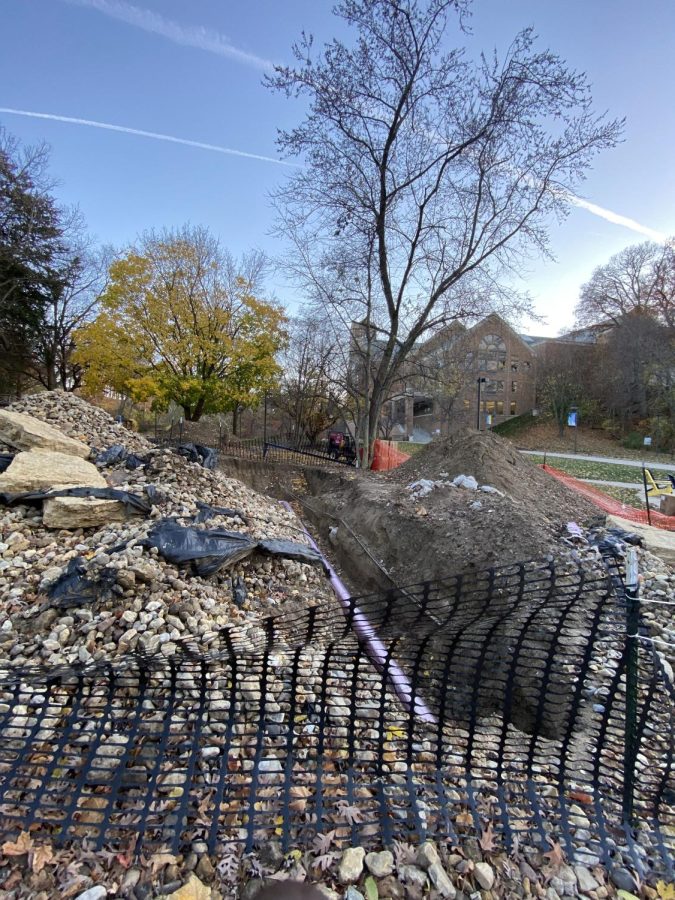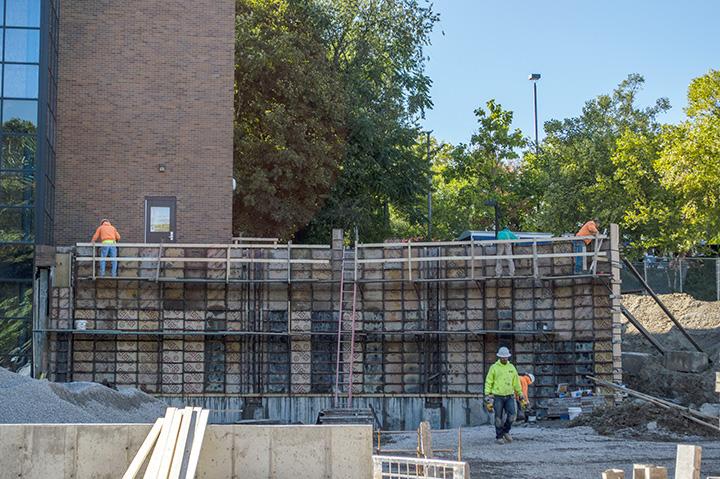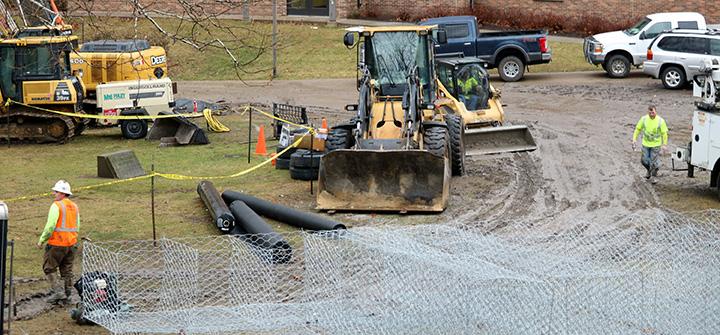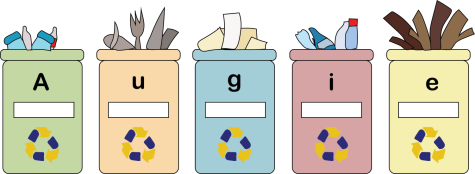Solar panels provide clean energy
May 17, 2023
Since 2019, Augustana has turned to solar panels for a more environmentally friendly source of energy. With four buildings (Carver, Westerlin, Centennial and PepsiCo) currently operating solar panels and a fifth (Lindberg) waiting to be put on the grid, one would hope that the environmental benefit would be noticeable.
However, the purpose of implementing solar panels across campus was to decrease overall energy costs, according to Director of Facilities Bob Lanzerotti. With decreased energy costs from solar energy come decreased greenhouse gas emissions -a positive for both the campus and the environment.
“What [the installation company] did was they took calculations for our energy costs campuswide again minus Lindberg,” Lanzerotti said. “The goal, I want to say, was an 8-10 percent reduction in energy costs.”
As of Dec. 2022, the solar panels on the roof of Lindberg had not yet been put online. When they are, an 8-10 percent reduction in energy costs may no longer be as likely. In general, it would seem to make sense for more solar panels to equal a larger reduction in energy costs, however, this is not necessarily the case.
“Once Lindberg [is] added that’s another 58,000 square feet, and then they put X amount of panels on top of that, will we really get to that 8 or 10 percent? Because now our square footage is higher,” Lanzerotti said.
It is possible that once Lindberg is added to the mix, energy savings could fluctuate, but that information is not predictable and will not be available until the solar panels on Lindberg goes online.
In addition to reducing energy costs for businesses and schools such as Augustana, solar energy is an important tool for combating climate change. According to the Office of Energy Efficiency & Renewable Energy in the United States, solar energy has a positive impact in the reduction of greenhouse gas emissions which in turn protects humans, wildlife and ecosystems.
Across the United States, many colleges and universities are making the transition to renewable energy sources such as solar and wind power. Although the majority of these colleges, like Augustana, are not committed to a 100 percent renewable energy goal, the few that are have made a great impact.
According to the Stanford Report, Stanford University successfully made the transition to 100 percent renewable energy in Mar. 2022. Even with this great accomplishment, the university has not ceased their climate change-fighting efforts. The installation of their second solar generating plant was said to have marked “a major milestone in [their] larger journey to reach net zero carbon emissions on campus.”
This poses the question: why doesn’t Augustana attempt to make the transition to 100 percent renewable energy like Stanford? How much do Augustana’s soon-to-be five solar powered buildings really help the environment?
In October of 2019, Augustana announced the Augustana College Presidential Green Initiatives Fund. According to the Augustana website, this fund “provides a means for students at Augustana College to initiate projects on campus that 1) address broader institutional goals in such areas as energy use, food management, facilities, transportation, and academic and business practices; and 2) lessen the college’s and/or surrounding communities’ environmental impact.” The fund would provide a $100-$1000 grant to each approved project from the initial funding level of $10,000 “from private donations and the president’s initiative funds.”
This fund can be seen as an attempt to improve the college’s greenhouse gas emissions, but a greater effort could be taken on even the most basic level, such as improving the recycling situation. However, the addition of solar panels to the campus may have a decent impact on Augustana’s greenhouse gas emissions as a whole.
The U.S. Energy Information Administration says that “using solar energy can have a positive, indirect effect on the environment when solar energy replaces or reduces the use of other energy sources that have larger effects on the environment.”
Basically, this means that in order for solar energy to make an impact on the issues of climate change and greenhouse gas emissions, it would need to replace or greatly reduce the use of fossil fuel energy. Although solar energy has not completely replaced the use of fossil fuel energy on campus, the implementation of solar panels across campus will allow at least a little bit less fossil fuel usage overall.
Even though a larger number of solar panels would increase the environmental benefits and green energy on campus, Augustana does not plan to install more after those on top of Lindberg. This decision has to do with the number of buildings that are suitable for solar panels, and the lack of ground space that would be required for ground-level panels to be installed.
“Let’s just say for sake of argument, we build another building,” Lanzerotti said. “We would definitely look at that particular facility, again with its flat roof surfaces, and see if the money would help us in that situation. But right now, no, there’s nothing left. We’re not looking to put any on the ground.”
The decision of which buildings were suitable to house solar panels was made based on multiple factors. Building age, structure and shape all have a part in the overall impact and cost effectiveness of the solar panels, and these were taken into consideration when decisions were being made.
“The actual location was chosen because those have the largest footprint of flat roofing space,” Lanzerotti said. “The other roof areas themselves were not conducive for [solar panels].”
Even if other buildings had the flat roofs that would allow for a successful solar panel installation, the age of these buildings would need to be taken into consideration. If a roof is too old at the time of installation, the solar panel may end up costing Augustana more in the long run.
“The contractors take into consideration the age of your roof,” Lanzerotti said. “Anything over 10 years of age, they do not want to put panels on because probably in the next five or six years you’re gonna be taking all those panels off to replace the roof.”
The balance of cost effectiveness and energy efficiency is one that needs to be carefully considered when choosing whether or not to install solar panels. Although solar energy helps to reduce greenhouse gas emissions, these panels need to be functional for a number of years in order to counteract the energy used in their construction. While Augustana’s number of solar panels is limited, the areas they have been installed will hopefully allow them to have a positive environmental impact in the years to come.

























































































































